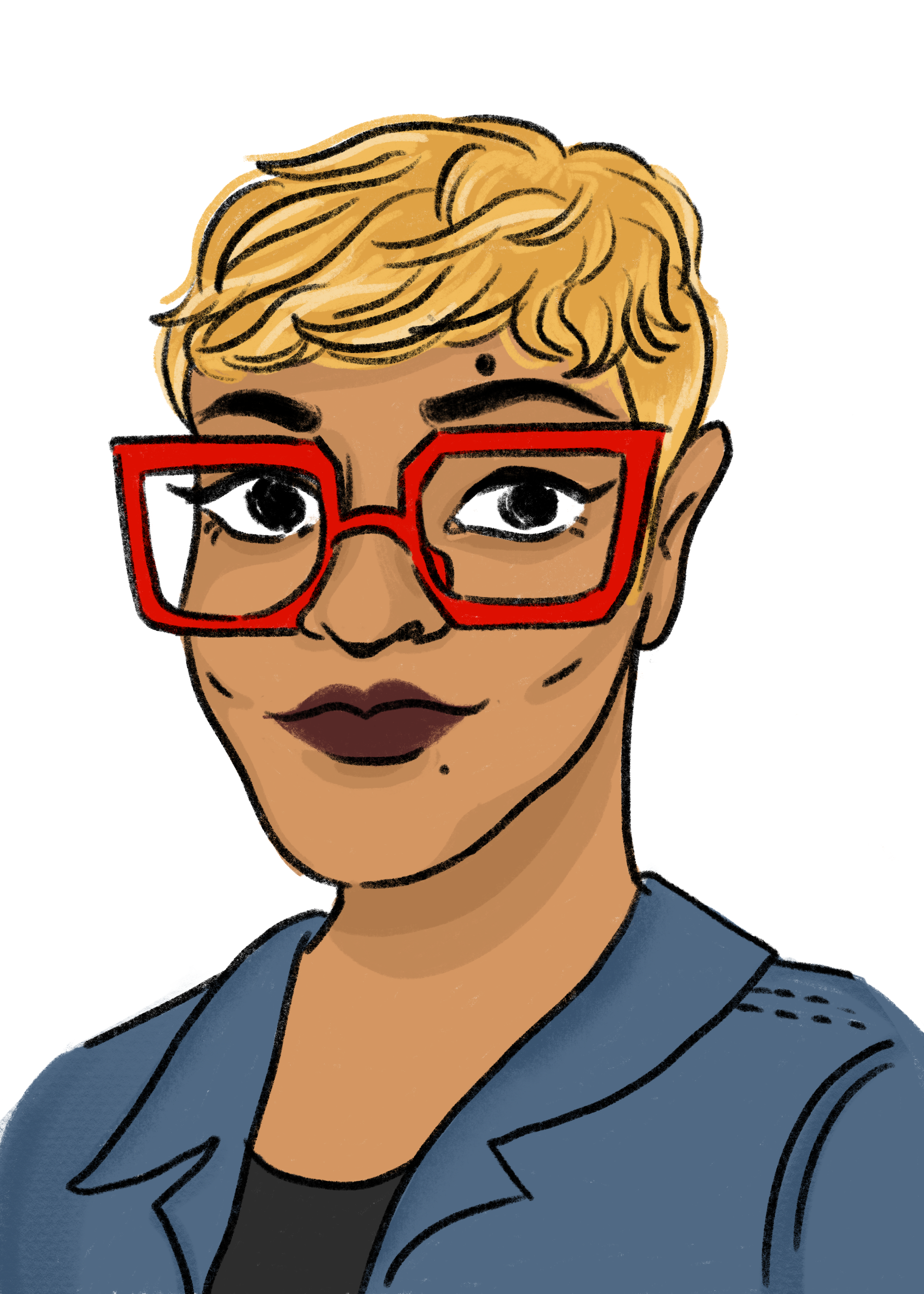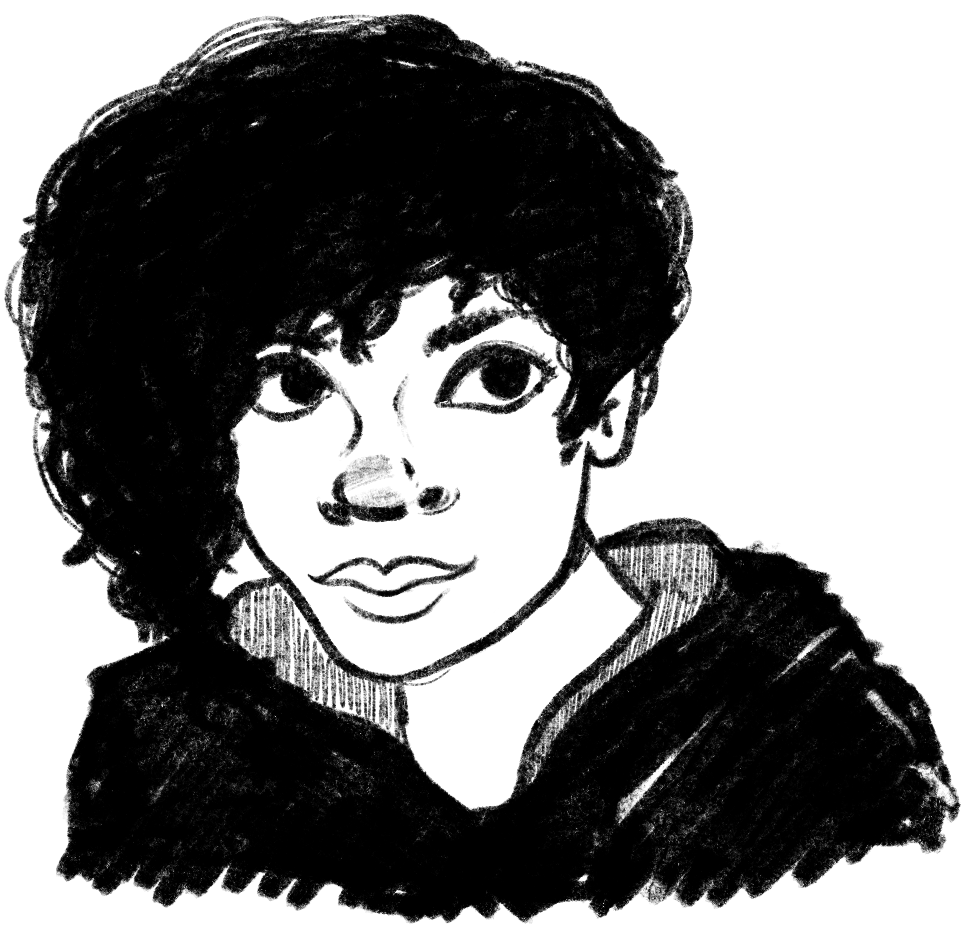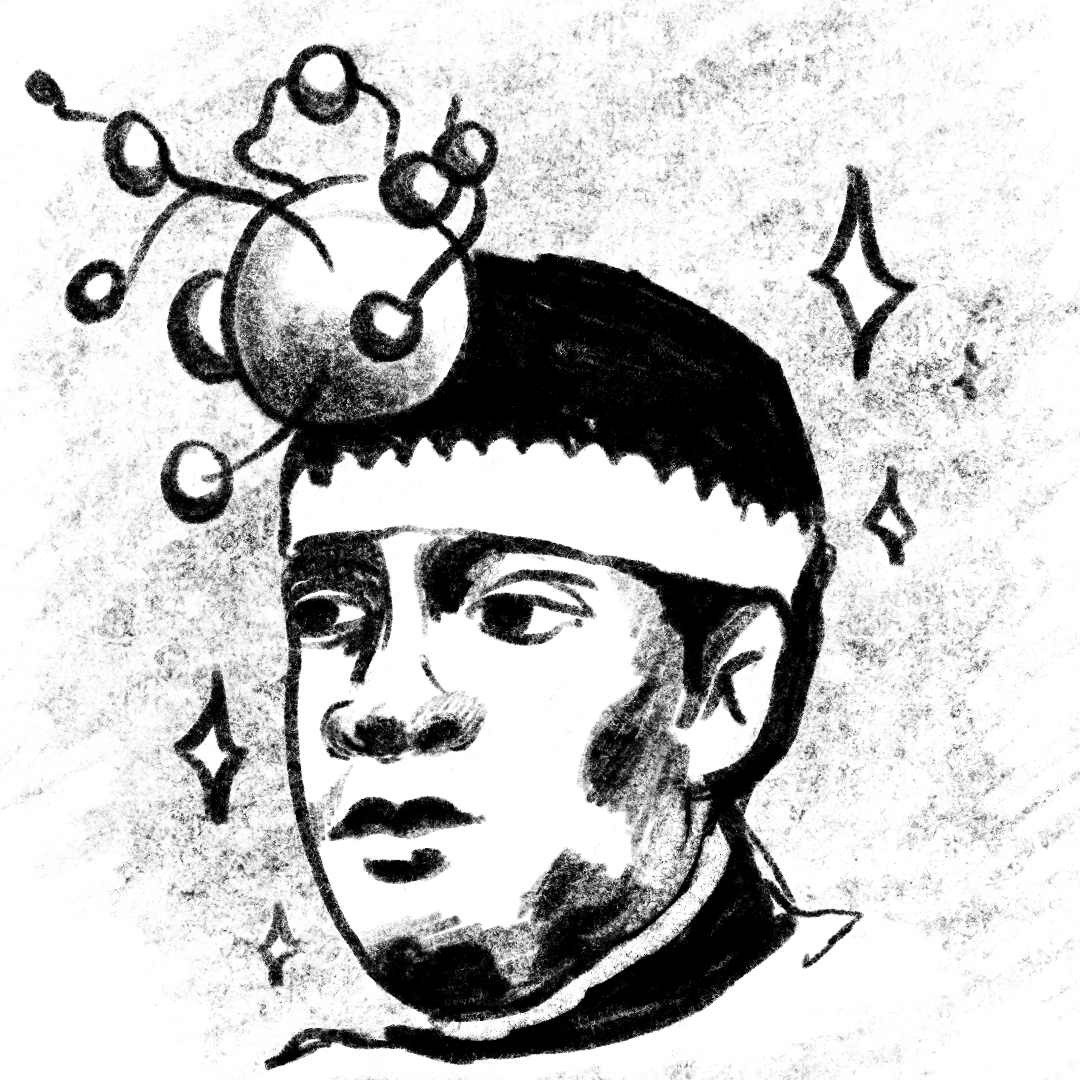The Panel and the Page: A Q&A with Ironheart's Eve L. Ewing
by Clare Austen Smith
Eve Ewing. Illustration by Clare Austen Smith.
To describe Eve L. Ewing, assistant professor at the University of Chicago’s School of Social Administration, as a Renaissance woman is an understatement—she does it all, and then some. Her 2017 book of poetry, Electric Arches,was named one that year's best books by NPR and the Chicago Tribune; her 2018 non-fiction book Ghosts in the Schoolyard: Racism & School Closings on Chicago's South Side delves into the “relationship between the closing of public schools and the structural history of race and racism,” specifically in Chicago's Bronzeville community; and she co-authored the play No Blue Memories: The Life of Gwendolyn Brooks, which was produced by fellow Chicago theater darlings Manual Cinema. Oh, and she teaches both graduate and undergraduate courses here at UChicago.
Ewing’s work spans genres, decades, and neighborhoods, but most of it is anchored in the city of Chicago, usually the South Side. This connection is especially evident in one of her more buzzed-about gigs: writing for the Marvel series Ironheart.Ironheartis the story of 15-year-old Riri Williams—supergenius, superhero, and South Side of Chicago resident.
UChicago Arts caught up with Ewing to talk about her work on Ironheart, Afrofuturism, and her own relationship with comic books.
Since writing Ironheart, has your appetite for or the way you read comics changed?
That's a great question. I've talked for years about how all writers can learn something from comics and cartooning, in the same way that I think all writers can learn something from poetry. I think I was always attuned to that. But now I spend a lot more time reading comics featuring specific characters to delve really heavily into their backstory. Sometimes one thing leads to the next and I end up in kind of a wormhole, reading issue after issue about some D-list character from the 80s that no one is thinking about. I find myself reading comics less for pleasure per se, and more to see who and what is hidden in the backlog that I might want to elevate or just muse over.
What was—if anything—missing for you in comics that you read growing up, and what do you think the character of Riri provides for children today?
Well, just a friendly reminder that comics are for people of all ages, not just children, and in some cases not children at all! One thing is that comics, especially superhero comics have been notorious for the way they have depicted young women. Not universally, and there are a lot of artists of all genders who have moved away from that, but it was definitely frustrating that even some of the awesome and exciting female characters would be drawn with just absurd body proportions, and when Riri was first announced as a character there was some (I think necessary) pushback about a couple of renderings where she was really hypersexualized. And it was like...This is a 15-year-old girl, y'all, let's not do this. I really appreciate working with an artist who is a dream collaborator, Luciano Vecchio, who puts such care and reflection into all of the characters, and for my part I work to build a character who is smart, interesting, three-dimensional, engaging, and has a lot to offer readers besides her looks and even her abilities.
“I think there’s something in us that feels small, that feels unseen, that’s been waiting for a long time for a glimmer of recognition, and when a light shines on it, something bursts.”
Your sociological work is so rooted in Chicago—your book Ghosts in the School Yard is about the 2013 Chicago school closings, and you attended and taught at Chicago Public Schools where teens like Riri Williams would attend. How did that inform your narrative for this series?
Oh, it's so much fun! I mean, it's a big wide Marvel Universe out there, and sometimes Riri will be at home, sometimes not. But when she is, it's so fun to get really detailed about how the city serves as a backdrop for her life. Some of the visual referents I want to share with Luciano aren't things you can find pictures of, so a couple times I've gone on Google Street View and taken screenshots to send him, like, this is what this corner looks like. Aside from just specific places, I think Riri's vision of "good" and "evil" is a little more nuanced than some other characters' might be. Growing up around a lot of regular people who face regular struggles informs her understanding of why people sometimes do things that they shouldn't and end up in situations beyond their control.
What sort of research went into your version of Riri?
I spent a lot of time reading the presence she'd already had in other titles, and thinking about what fundamental questions arose for me as I encountered her character. The first one, which was the biggest one for me, was: why do you do what you do? I knew that I wanted to set about answering that question in Issue 1. I also reflected quite a bit on other characters who I think are analogous in some ways, and thought about what makes them work, what makes them effective, and what makes them tick, and tried to think about the most important aspects of worldbuilding that Riri would need to feel really robust. I also had a lot of helpful conversations with other writers who were extremely generous in giving me mentorship, support, and feedback.
Illustrations by Clare Austen Smith.
In a decade, where do you envision Riri in the superhero canon?
Oh man. I'm trying to make it to the end of the year! Ha! but you know, sometimes people say "there are no black superheroes" or they only know about Black Panther and Storm, and I think that's such a shame because there are lots of really interesting black characters out there. They maybe just haven't had the same opportunities to be front and center and to connect with audiences over time. I think it would be amazing for Ironheart to really shine for multiple generations, for the kids who are reading her now in third or fourth grade to be able to stick with her over time, grow with her, and see her as a classic character.
Do you feel any kinship with the term “Afrofuturism”? Would you define your work on Ironheart as being Afrofuturist?
I have been vocal in my identification as an Afrofuturist and absolutely see my work in that tradition. Electric Archesis an Afrofuturist book. Ironheart is an Afrofuturist project, absolutely. For me, people like George Clinton, Sun Ra, Janelle Monáe, Octavia Butler, Krista Franklin—they've all been huge inspirations to me and are important influences on my work. It's a mantle I wear proudly. I also have been meaning for some time to write a short essay series about Afrofuturism because I think it's exciting to be part of an artistic tradition that in some ways is still very much in flux and is still being defined, and I want to write through some of these ideas and questions.
In a recent interview, you said that you were watching [actress Storm Reid in] the trailer for Ava DuVernay’s A Wrinkle in Time. How does Ironheart expand the conversation about representation for you? What do you hope Ironheart evokes in young readers?
What I felt about the trailer was magnified twenty times over when I saw the film. I just sobbed and sobbed throughout that movie and I couldn't really even put my finger on why. I sometimes think conversations about representation can be very flattening. To me, mere presence is not enough. I think we need different identities and voices represented in media, but it also matters what that representation looks like, what it sounds like, what its politics are, and what people get to do. I grew up reading a lot of fantasy literature about British children in trousers or elves or whatever going on adventures, and those works made a huge impact on me. But seeing a little girl who looked like me going on this amazing, otherworldly adventure...I don't think I understood how badly I needed that. With Ironheart, I often feel the same way. Often when I get drafts of the art, it makes me cry. Even reading lines I literally wrote myself makes me cry! I think there's something in us that feels small, that feels unseen, that's been waiting for a long time for a glimmer of recognition, and when a light shines on it, something bursts.
“I think it would be amazing for Ironheart to really shine for multiple generations, for the kids who are reading her now in third or fourth grade to be able to stick with her over time, grow with her, and see her as a classic character.”
Okay, now we’re getting a bit spoiler-y. In the first issue, I was struck by how Riri’s personal struggles with her identity and forming connections with others after tremendous loss were as salient and clear to the story as her superhero abilities. Was there intention in both storylines having equal weight?
Oh, of course. The most important truism for superhero comics is that there has to be a person there, beneath the costume, or the suit, or the powers. And we have to care about that person.
The first thing Riri did when she arrived on the scene where Clash was holding diplomats hostage was sit down and think. This didn’t seem like a typical superhero choice to make; why did you choose to have her pause instead of rush into action?
To a certain extent, thinking is her superpower! She has an incredible suit, she can fly, and fight and blast people, but what good is any of that if you don't have a plan?
Illustration by Clare Austen Smith.
I love the contrast of the way Riri speaks, which sounds to me like a regular Chicago teen, to the way Clash speaks. He chooses his words like a classic Marvel supervillain—lots of the pedantic “girl” in his sentences, grandiose statements of mayhem. This contrast makes Riri feel so real.
I want her to sound like what she is, which is a black teenager from Chicago living in 2018 who grew up on the South Side, but also spent a lot of time by herself at a young age, went to MIT, and is a nerd. There's a lot of hodgepodge in that, and she definitely code-switches. If anything, if I were writing that issue again, I would probably nix a couple of Clash's grandiose statements of mayhem.
Ok, one last question I have to ask as a Chicagoan—were those Hot Cheetos or Takis that were on Riri’s desk?
That's a funny story. So, as a black woman, there are a lot of times when I give feedback to the rest of the team—editors and artists—about how things should look or sound. Certain details in dialogue, hair, and stuff like that. We can't use brands for legal reasons, so in the script as I wrote it, it says "an empty bag of hot [delicious crunchy cheesy snack]." And when the colorist saw it, he didn't know that said snacks should be red, and he made them orange. Which I didn't catch when I reviewed the proofs, and didn't catch until the issue was in print, and I was so mad at myself for missing it. But to answer your question, those are Marvel Brand Burnin' Hot Cheese Bites, of course.
This interview has been edited and condensed for clarity.




